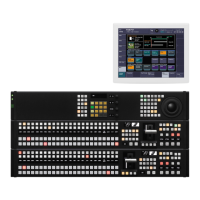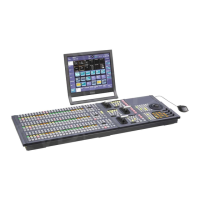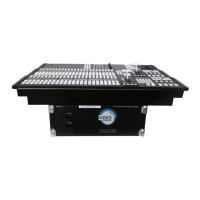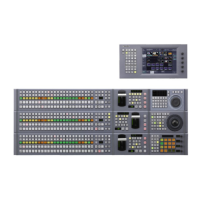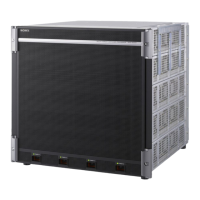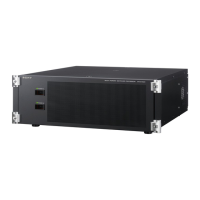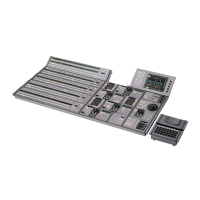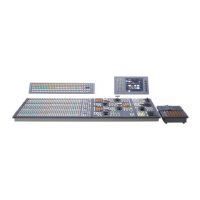Managing Images Using a DDR/VTR
Open the Frame Memory >External Device >Restore
from DDR/VTR menu (2565).
Press [File >File Name Data], to read the file list from
the File >Frame Mem >File Name Data menu (7153).
For details,
1
“Overview of File Operations”
To restore the ancillary data, select any of FM1, FM3,
and FM5.
Press [Restore Enable], turning it on.
In the <Restore Type> group, select either of the
following.
Replace: Replace the existing frame memory data.
Append: Add to the existing frame memory data.
Start playback on the external device, and immediately
after that press [Yes].
Make sure that the red or blue image inserted at the
beginning when the backup was made is included. If
this image is not found, the clip or still image will not
be played back correctly.
This starts the restore operation, and when completed
100%, 0%, 0% respectively.
This starts the backup, and when completed a message
appears.
8 Stop the playback on the external device, and press
[OK].
6
Stop the recording on the external device, and press
[OK].
7
To save the file list in memory, press [File >File Name
Data].
The File >Frame Mem >File Name Data menu (7153)
appears.
The name of the file that is saved is fixed (FM_Bkup).
For details,
1
“Overview of File Operations”
(p. 302).
Restoring backup data from DDR or VTR
Notes
Before starting the restore operation, it is necessary to
select the DDR/VTR output on the FM input bus.
Extracting Images from a Video Tape
By recording a clip or still image stored on a video tape as
a single clip (single file) under certain rules, you can
automatically extract an image from the clip, and save as a
separate frame memory file.
Relation between recorded state of video
tape and files after extraction
The extraction is carried out according to the following
rules.
Example 1: When only video signal clips and a
still images are recorded (single files)
V: video
Red: red marker frame
a)
Single video tape
Result of extraction:
Each section surrounded by red marker frames is extracted
as a clip (main file). If the red markers surround a single
frame, then it is extracted as a still image.
In the case above, two clip files (main files) and one still
image file are extracted.
Example 2: When a video signal clip is followed
by a key signal clip with the same number of
frames (pair file)
V: video
K: key
Red: red marker frame
a)
Blue: blue marker frame
b)
Single video tape
Result of extraction:
The section surrounded by red marker frames is extracted
as the main file, and the section surrounded by blue marker
frames is extracted as the sub file.
In the case above, one clip file (pair file) is extracted.
a)
A red marker frame is a monochrome frame with the RGB signal levels at
b)
A blue marker frame is a monochrome frame with the RGB signal levels
at 0%, 0%, 100% respectively.

